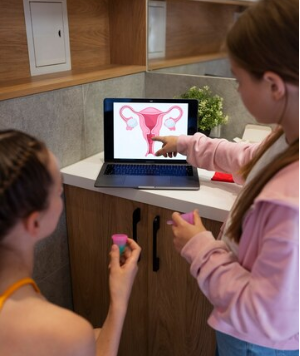
Anal fistulas are a painful and distressing condition that can significantly impact a person’s quality of life. However, advancements in medical technology have paved the way for innovative treatment methods, such as video-assisted anal fistula treatment (VAAFT). If you’re considering this procedure, especially in Delhi, here are ten essential things you should know.
1. What is Video-Assisted Anal Fistula Treatment (VAAFT)?
Video-assisted anal fistula treatment is a minimally invasive surgical procedure used to treat anal fistulas. This technique utilizes a fertiloscope, a specialized instrument with a camera, to provide a clear view of the fistula tract. This allows the surgeon to precisely navigate and treat the fistula from within, minimizing damage to surrounding tissues.
2. Why Choose VAAFT Over Traditional Methods?
Traditional methods of treating anal fistulas often involve significant tissue removal and lengthy recovery times. VAAFT, on the other hand, is designed to be less invasive, offering patients a quicker recovery with less postoperative pain and lower risk of complications. This makes it an attractive option for many patients.
3. Availability in Delhi
Delhi is home to some of India’s leading medical facilities and specialists in colorectal surgery. The city boasts several hospitals and clinics equipped with the latest technology and skilled surgeons who are proficient in performing VAAFT. This makes Delhi an ideal destination for those seeking advanced treatment for anal fistulas.
4. Preparing for the Procedure
Before undergoing VAAFT, patients will typically undergo a thorough medical evaluation. This may include a physical examination, imaging studies, and possibly a colonoscopy to assess the extent of the fistula. Patients are usually advised to follow specific preoperative instructions, such as fasting or adjusting current medications.
5. The Procedure Itself
During the VAAFT procedure, the surgeon inserts the fertiloscope into the fistula tract. The camera on the fertiloscope provides a live feed to a monitor, allowing the surgeon to visualize the fistula’s internal structure. The surgeon then carefully removes the fistula lining and closes the internal opening using various techniques, ensuring the tract is properly treated.
6. Benefits of VAAFT
One of the primary benefits of video-assisted anal fistula treatment is its minimally invasive nature. Patients often experience less pain and a quicker return to normal activities compared to traditional surgery. Additionally, the precise visualization offered by the fistuloscope allows for targeted treatment, reducing the likelihood of recurrence.
7. Postoperative Care
Postoperative care is crucial for a successful recovery. Patients are typically advised to maintain good hygiene, avoid strenuous activities, and follow a balanced diet to promote healing. Follow-up appointments are essential to monitor progress and address any concerns promptly.
8. Potential Risks and Complications
As with any surgical procedure, VAAFT carries potential risks and complications. These can include infection, bleeding, and incomplete healing of the fistula. However, these risks are generally lower compared to traditional surgical methods, thanks to the minimally invasive approach and precise targeting.
9. Success Rates
The success rates for video-assisted anal fistula treatment are promising. Studies have shown that VAAFT has a high success rate in achieving fistula closure and reducing recurrence. However, individual outcomes can vary based on factors such as the complexity of the fistula and the patient’s overall health.
10. Cost and Insurance
The cost of video-assisted anal fistula treatment in central Delhi can vary depending on the hospital, the surgeon’s expertise, and the specific case. It is advisable to consult with multiple healthcare providers to understand the costs involved. Many health insurance plans cover the procedure, but it’s essential to confirm coverage details with your insurance provider.
Conclusion
Choosing video-assisted anal fistula treatment in Delhi can offer a multitude of benefits for those suffering from this challenging condition. With its minimally invasive nature, reduced recovery time, and high success rates, VAAFT represents a significant advancement in the treatment of anal fistulas. By understanding these ten key points, you can make an informed decision and take the first step toward a pain-free life.
Whether you’re exploring treatment options for the first time or seeking a better alternative to traditional surgery, video-assisted anal fistula treatment in Delhi could be the solution you need. Always consult with a qualified medical professional to discuss your specific condition and the best course of action for your health.





